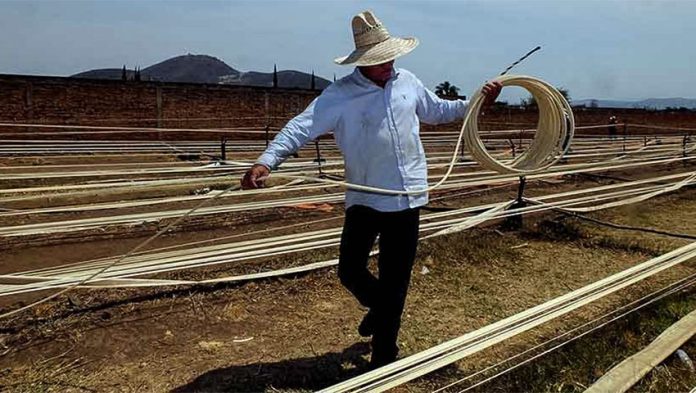Lake Cajititlán is located 25 kilometers due south of Guadalajara and enjoys a fine reputation for its artesanías, handmade crafts. Each community around the lake has its specialty.
While visiting these artisans, I was told that I must not miss the rope makers of the nearby town of San Miguel. “They use the fibers of wild agaves to make specialized ropes for charros (rodeo cowboys),” I was told. “They’re famous both in Mexico and in the U.S.”
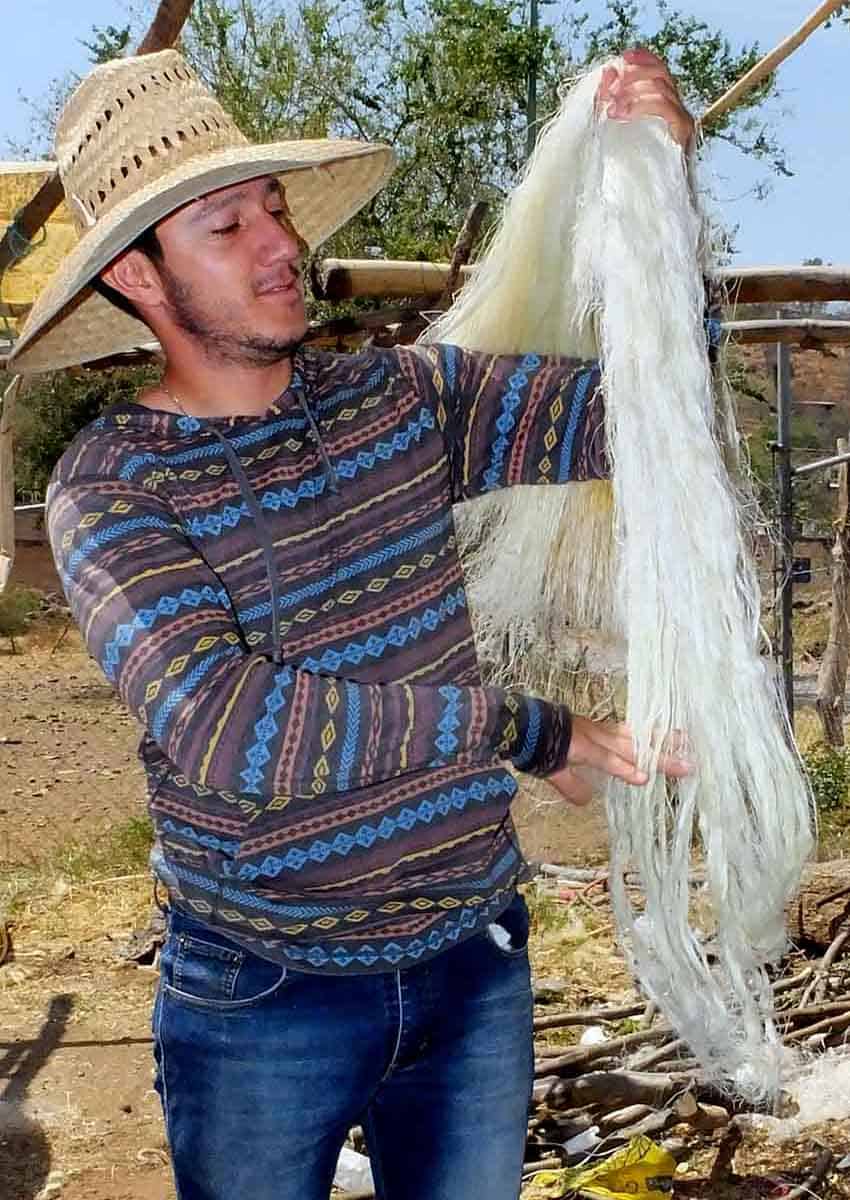
So, one day several years ago, I drove into San Miguel Cuyutlán. When I reached the plaza, I thought for sure I would see all sorts of shops selling lariats. But to my surprise, I didn’t find a one.
“Don’t you make ropes here?” I asked a lady on the street.
“Claro que sí, she replied. “Lots of people here make ropes.”
That was how I ended up in the home of an elderly master rope maker named Don Isidro Díaz.
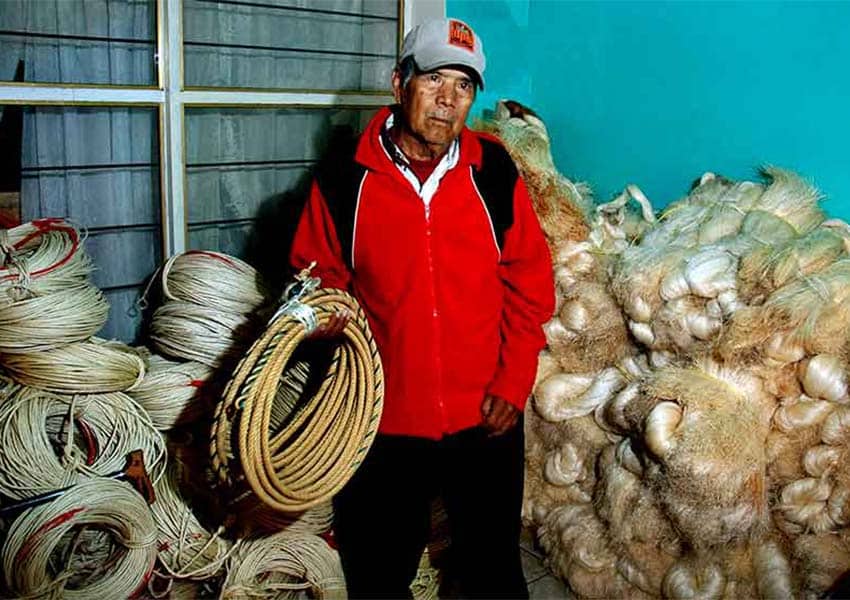
“How long have you been making reatas? I asked him.
“Reatas? I don’t make reatas,” he replied. “I make sogas.”
I had used the wrong word. Reata is the origin of the English word lariat, an interesting corruption of “la reata,” but Don Isidro quickly pointed out that his ropes were much stronger than a mere reata. They’re referred to by professionals as sogas.
I discovered that Don Isidro had learned his trade at the tender age of 15, and after making ropes for over half a century had gained the fame of a master craftsman.
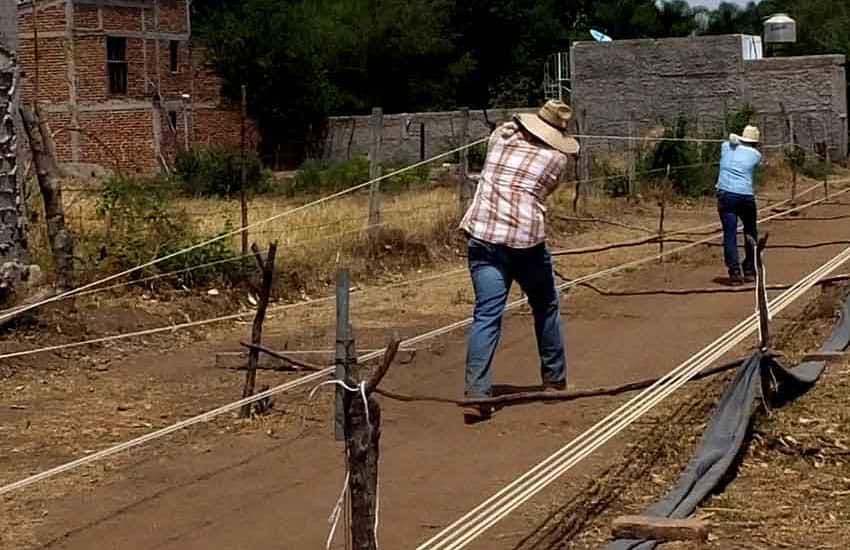
“You won’t believe it,” he told me, “but people call me from places like Chicago and Nevada, and they come all the way here to buy their sogas. They know they’re good because I give them my personal guarantee.”
I asked for how many months he guaranteed them. “Months? My guarantee is for the life of the rope!”
Of course, I wanted to see the place where the ropes are made, but Don Isidro warned me, “Foreigners have come here expecting to see a factory full of machines. I hope you won’t be disappointed, because we have no machines — we do everything by hand.”

I was not at all disappointed. The soga-making works were located only a few blocks from Don Isidro’s house. Nothing like a factory, it was an open-air operation: a flat place where strands of rope up to 50 meters long are stretched between stakes only a few inches above the ground.
The strands are made of twisted ixtle fiber which comes from the maguey bruto (Agave inaequidens Koch), which grows on 2,970-meter-high Cerro Viejo, overlooking San Miguel. This same agave, I was told, is also used to make raicilla, a competitor of tequila.
I found only one man working in the “non-factory.” His name was Fernando Romero, and he told me that there are many different procedures in soga-making. This afternoon, he said, he would be “twisting.”
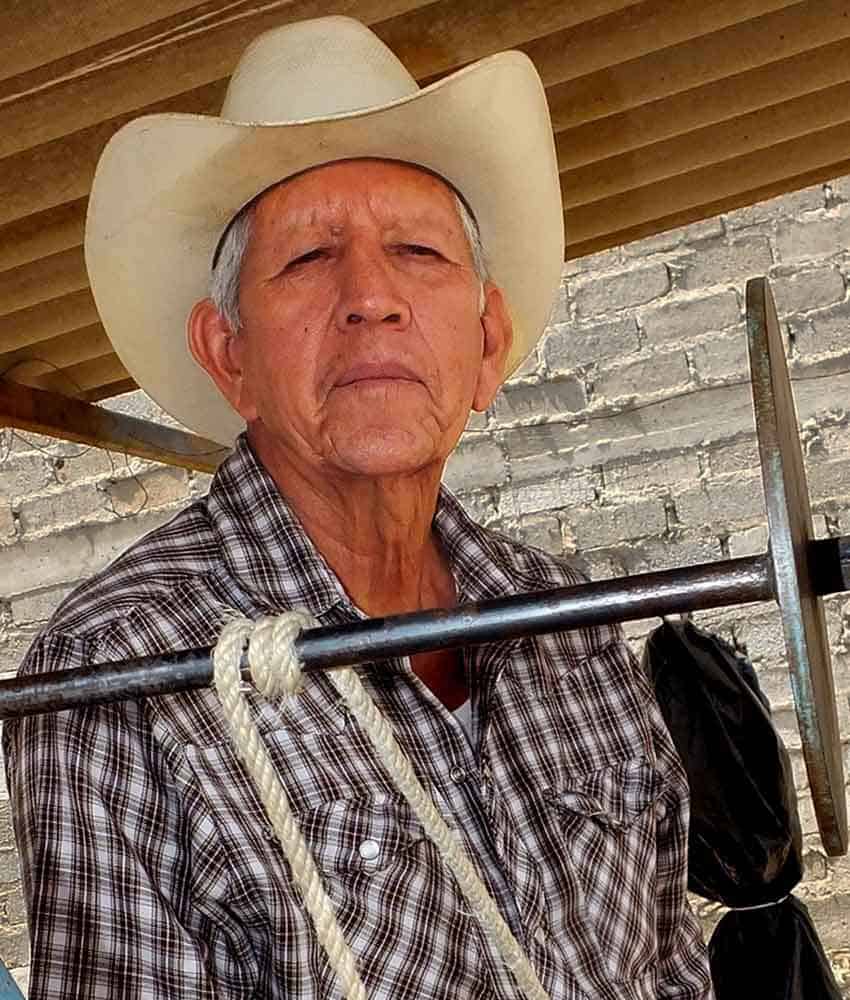
How in the world he was going to twist those already tightly twisted cords, I couldn’t imagine, but Romero plucked one of them and said, “See? This one is a little slack.”
With brute strength, he then slipped the looped end of the rope off the stake and, maintaining tension, walked over to an axle with a handle mounted on a sturdy pole. He slipped the loop over a pin at the end of the axle and turned the handle vigorously for about a minute.
Again, straining mightily, he transferred the loop back to the stake. Next came a curious procedure he called puliendo (cleaning).
Romero grabbed a thick wad of loose ixtle fibers and wrapped it around one of the stretched cords, which he then lifted up to shoulder level (this I would have thought impossible if I hadn’t seen it) and then began to walk forward — against great resistance — sliding the rope through the loofa-like wad of fibers, another operation requiring great strength.
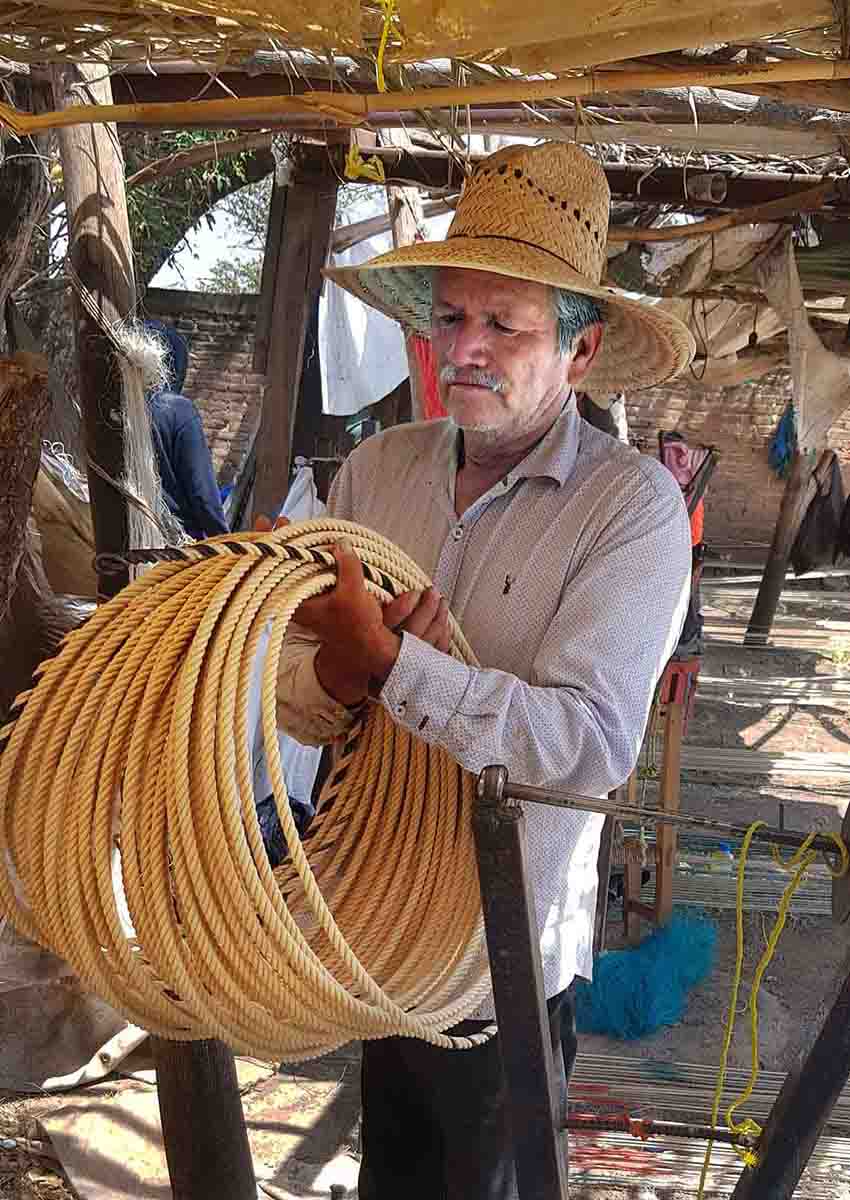
“I do this 30 times in each direction for each cord…every day,” he shouted over his shoulder as he disappeared off into the distance.
Don Isidro passed on a few years later, but his legacy lives, and today San Miguel has more rope makers than ever. Of course, you’ll still not find a rope store in town, but if you wander out to the cemetery, you’ll find plenty of sogueros nearby, twisting and stretching rope under the hot sun.
“There’s no shade here because the fibers need to be exposed to full sunshine for at least 15 to 20 days,” I was told by Don Manuel Leonel, whose Red Brand ropes are highly in demand by charros — Mexico’s traditional horsemanship sport.
“By regulation, the only ropes charros can use in competition must be made of ixtle,“ he said, “and most people agree that the best sogas in Mexico are made right here in San Miguel.”
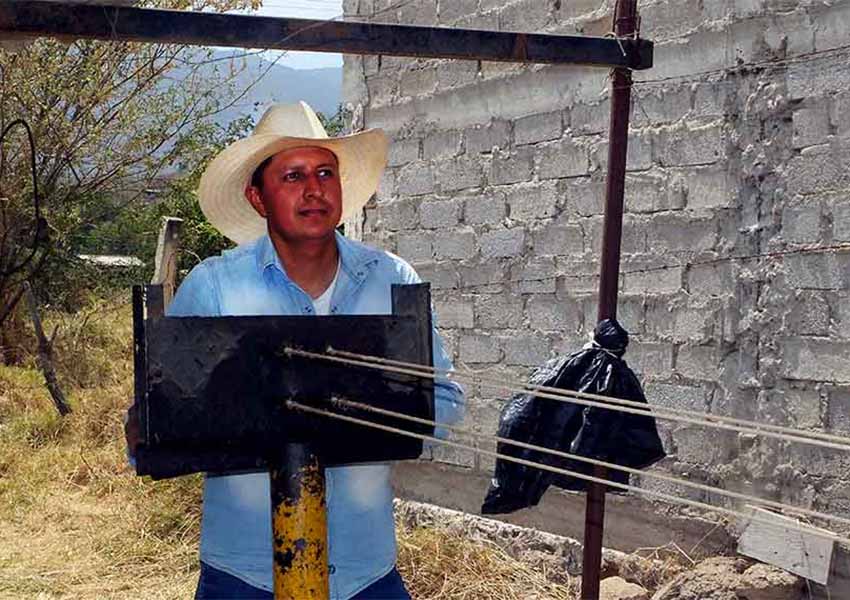
The procedure starts with an armful of agave fibers which the men spin into long strings called hebritas. Fifteen of these hebritas are then twisted into a cordón (strand) which must be stretched and twisted ever tighter for weeks, occasionally receiving a bath of liquid starch.
The final stage is to attach four strands to a sturdy device with gears, which permits each strand to be individually twisted while, at the far end, those same four strands are, in turn, twisted together to form a soga so incredibly hard, it literally feels made of metal.
Two sogueros earn 500 pesos each per rope, and typically they turn out five per week. That same rope (the 50-meter length) is then sold for about 4,000 pesos to customers who buy them — still hot from manufacture — right at the rope-making works, no middle man needed.
Want to watch the procedure for making charro ropes? Ask Google Maps to take you to: CJ78+J66 San Miguel Cuyutlán, Jalisco.
The writer has lived near Guadalajara, Jalisco, since 1985. His most recent book is Outdoors in Western Mexico, Volume Three. More of his writing can be found on his blog.
